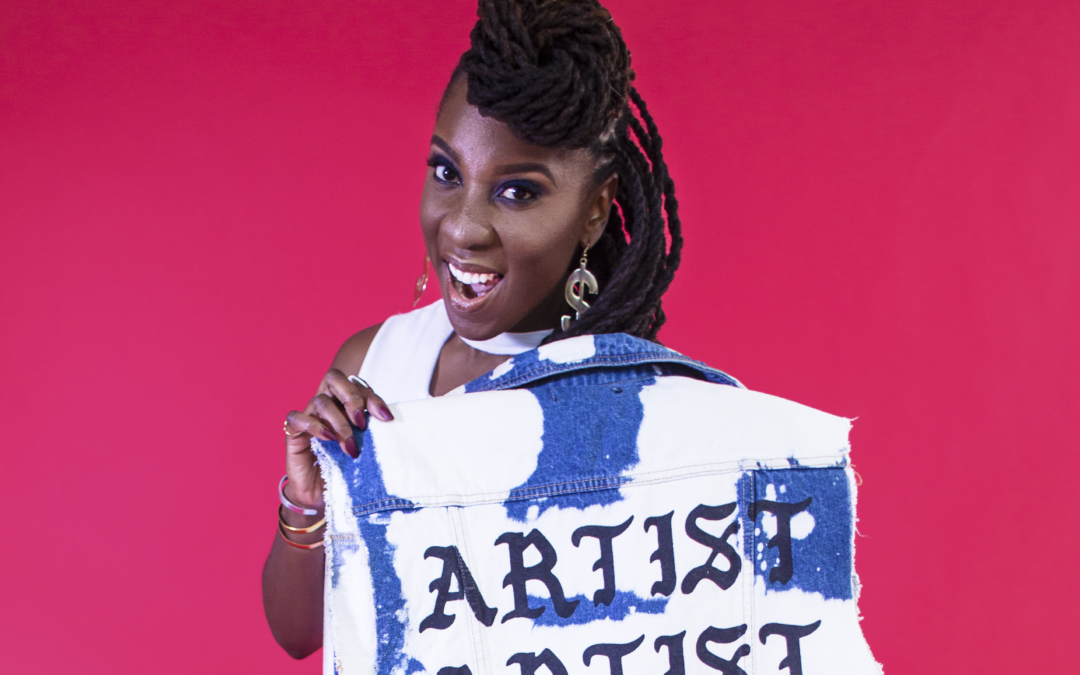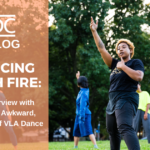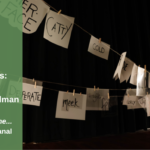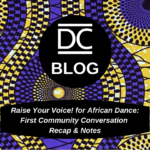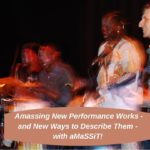Communications Associate, Kiersten Resch, recently interviewed dancer, choreographer, educator, and artist Aysha Upchurch to learn more about her class Text & Movement that she’ll teach at Summer Sizzle Dance Festival 2019! Aysha, the Dancing Diplomat, is a ‘seed planter and soil agitator who creates, facilitates, and designs for radical change’. She has spoken at national conferences about centering classrooms around equity and cultural relevance, while displaying the importance of dance and movement in education. As a soloist and choreographer, she has created and presented choreography for various venues across New England. You can take Aysha’s Text & Movement class at The Dance Complex on August 6th at 4PM! Additionally, Aysha will teach a Hip Hop class the same day at 6PM!
Q: Can you tell us more about your class, Text & Movement?
This workshop is an opportunity for folks to play around with finding and narrating a story that’s important to them by using words and gestures that have meaning for them. I abide by the ‘no wrong answer/gesture’ rule, so movers can feel free to embrace how their bodies find and tell stories. I provide some scaffolding and support to help them feel comfortable speaking through word and movement.
Q: What do you hope students will leave with after taking your workshop, Text & Movement?
My hope is that movers have a joyful experience connecting more deeply with themselves, their bodies and their power as storytellers.
Q: What do you feel the importance is between movement and text?
It’s all about storytelling and getting in touch with your ability to author something meaningful to you. The connection is about tapping into where we feel and hold words and experiences and allowing ourselves to own that. It’s also about allowing oneself to realize the learning one does with and through the moving body is real and valuable, just as much as text is—and the combination is potent. It’s all about liberation.
Q: How does the relationship of text and movement play a role in your own work?
Spoken word and movement have become mainstays to my choreographic voice. Perhaps I have grown to or needed to rely on my words and my story as the score for performances. I still like beats, live and recorded music, sampled and original compositions. Yet, I have found that sometimes the rhythm and meter of words is quite melodic and just the right sound to accompany and complement the movement on the stage. I think it invites the audience into the realm of the story more.
Q: How do you see dance playing a pivotal role in education?
I believe dance is inherently spiritual, communal, and social. For centuries, people have been availing their bodies to these dimensions for healing and communication, for finding a way to feel and be. People’s moving and dancing bodies carry such powerful sources of knowledge and information. Too often, movement is censored in schooling or relegated to the cool class that is devoid of “rigor” where students get to play. So, the moving/dancing body with all of its social and spiritual capital gets minimized and removed from schooling. Teachers and students are made to believe the quiet—still body is the picture of learning. It SOO is not—at least not for everyone. Dance in education, in teaching and learning, can look so many ways from movement breaks to full integration to specialized technique courses. I’m here for decolonized education that allows all bodies to be free and to be assets in the classroom.
Click HERE to learn more about Aysha!

